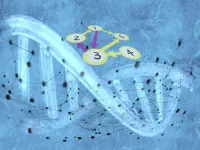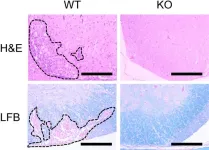Expertly engineered saccharomyces cerevisiae yeast strain in the optimized production of carotenoids
2024-03-12
(Press-News.org)
More than 90% of the commercially available carotenoids are synthetically produced using chemicals. To meet the increasing demand for cost-effective natural compounds in carotenoid synthesis, researchers at Xiamen University, China, have developed an engineered S. cerevisiae yeast strain capable of selectively overproducing carotenoids. They redesigned the genomic sequence and critical pathways to optimize carotenoid production. This novel and successful research approach can be extended to other model microorganisms in the future.
Carotenoids, classified as tetraterpenoids, feature a carbon-hydrogen backbone and are found in algae, plants, and some microorganisms. The bright colors in most vegetables and fruits are a result of these carotenoid pigments. Due to their excellent antioxidant properties, carotenoids are widely used in healthcare, medicine, and cosmetics. In recent years, these antioxidant molecules have gained popularity as a nutraceutical food supplement.
Most of the present-day, commercially available carotenoids are produced through chemical synthesis. The extraction and purification of carotenoids from natural sources is restricted by the costs and time-consuming nature of the processes involved. To circumvent these issues and meet the increasing demand for carotenoids, a group of researchers from China, led by Dr. Jifeng Yuan of Xiamen University, have successfully attempted to produce carotenoids by employing microbial synthesis techniques. ‘Over the years, biotechnology has evolved drastically, allowing for specific modifications at the genetic level and regulating both, intracellular and intercellular dynamics. Our team has used multiple strategies on the model microorganism of Saccharomyces cerevisiae to improve the microbial synthesis of carotenoids’, says Dr. Yuan, sharing the inspiration behind using microbial synthesis technology.
They initially reengineered the metabolic pathways in S. cerevisiae yeast to increase the overall content of acetyl-CoA, which can be easily converted into carotenoids. Further, they suppressed the secondary metabolic pathway of squalene synthase-ergosterol. This ergosterol pathway reduces the overall availability of energy and raw materials needed for carotenoid production. Also, as carotenoids are hydrophobic-resistant to water, their storage within yeast microorganisms was a challenge. The researchers introduced the human lipid binding/transfer protein saposin B (hSapB) genetic sequence to enhance the storage of carotenoids. By changing the growth medium of yeasts to a low-cost, highly beneficial medium rich in yeast–peptone–dextrose and reengineering a genetic expression system, the output of biomass increased by 5-fold.
The S. cerevisiae yeast strain was selectively reengineered to optimize the production of high content of beta-carotene, a pre-cursor molecule of carotenoids. The results of this path-breaking research work were published online in the BioDesign Research journal on 10 January, 2024. ‘We are very hopeful about the scalability and ease of implementing our novel carotenoid production technology and believe that in the near future such engineering strategies can be extended to other microorganisms as well’, concludes Dr. Yuan, highlighting the importance of the present research.
Advancing bio-engineering to create novel model microorganisms holds promise for future industrial carotenoid synthesis, facilitating the production of essential health supplements. This approach can significantly contribute to mitigating vitamin deficiencies and addressing malnutrition on a global scale.
###
References
Journal: BioDesign Research
Titles of original papers: Multidimensional Optimization of Saccharomyces cerevisiae for Carotenoid Overproduction
DOI: 10.34133/bdr.0026
END
ELSE PRESS RELEASES FROM THIS DATE:
2024-03-12
When we recycle electronic devices we can no longer use, we expect to make the most out of the precious natural resources that went into building them. But electronic waste is notoriously difficult to recycle, because it’s hard to separate the different metals in the waste from each other. Scientists have now found a way of selectively capturing metals from a waste stream using spent brewer’s yeast, the same beer byproduct that goes into Marmite. Not only that: the yeast can be reused, making the process even more eco-friendly.
“Electronic waste is difficult to recycle because it is very heterogeneous,” said Dr Klemens Kremser ...
2024-03-12
Does previous experience bias a person in future estimations? Yes, Osaka Metropolitan University researchers in Japan report, but only if the person engages higher processing powers by responding, as opposed to simply observing.
They made their findings through experiments involving participants estimating the number of dots flashed on a screen. Participants either had to input their estimate before making another estimate on a new set of dots or were not prompted to do anything but observe. The researchers found ...
2024-03-12
11 March 2024, Singapore – A study[1] by KK Women’s and Children’s Hospital (KKH), Singapore General Hospital (SGH) and National University Hospital (NUH) has revealed that COVID-19 transmission from mothers to their newborns is low.
The study involving 371 women who had COVID-19 infection during pregnancy and their newborns found that only four infants or 1.1 per cent of the babies were diagnosed with COVID-19 after birth, of which three (1.1 per cent) were from mothers who were COVID-19 vaccinated and one infant (1.3 per cent) was from a mother who was not vaccinated.
Senior Author of the study, Dr Yeo Kee Thai, Senior Consultant, Department of Neonatology, KKH ...
2024-03-12
Despite the importance of biodiversity and the urgency to conserve it, assessing what aspect of biodiversity requires the highest priority has proven complex, especially when conservation resources are limited. A new study published in Current Biology sheds light on this question.
Prof. CHEN Zhiduan's team from the Institute of Botany of the Chinese Academy of Sciences (IBCAS) and international collaborators have identified the spatial heterogeneity of biodiversity hotspots and endemism centers. With ...
2024-03-12
Kyoto, Japan -- Cells possess an innate immune system that defends against invasive pathogens such as bacteria and viruses. Previous studies have mapped out the cytoplasmic cGAS-STING pathway in the cytoplasm, known for responding to foreign nucleic acids, such as double-stranded DNA.
Micronuclei -- or MN, abnormal intracellular structures containing the cell's DNA -- have also been suspected of triggering the pathway. However, no conclusive evidence exists of pathway activation by MN-induced cyclic GMP-AMP synthase, or cGAS.
Now, Kyoto University and the AIRC Institute of Molecular Oncology, or IFOM, have ...
2024-03-12
Ultraviolet rays find diverse applications in medical and healthcare, serving purposes such as disinfection, sterilization, and therapy. They are also used in the semiconductor industry for creating microcircuits and patterns. A metalens fabrication process, developed by a team of researchers at Pohang University of Science and Technology (POSTECH), enables control over the optical properties of these UV rays. This innovation has garnered significant attention across industries, sparking interest in potential advancements.
A collaborative research team, comprising Professor Junsuk Rho from the Department of Mechanical Engineering and the Department of Chemical Engineering ...
2024-03-12
A new study highlights a potential therapeutic target for immune-related disorders, such as multiple sclerosis and asthma.
A new study has shed light on the importance of the protein STAP-1 in activating certain immune cells. Understanding the role of STAP-1 in these cells could give researchers a better glimpse into immune-related disorders and ways to treat them.
The researchers found that STAP-1 plays an important role in the activation of T cells, which are white blood cells that play a critical role in defending the body against infections and maintaining overall health. T cells are adept at recognizing foreign molecules that ...
2024-03-12
**Embargo: 23:30 UK, 7:30 p.m. ET March 11, 2024**
***Please note the unusual embargo time for the United States due to daylight savings time***
Global Burden of Disease
COVID-19 had greater impact on life expectancy than previously known,
but child mortality rates continued to decline during the pandemic
A new study published in The Lancet reveals never-before-seen details about staggeringly high mortality from the COVID-19 pandemic within and across countries. Places such as Mexico City, Peru, and Bolivia had some of the largest drops in life expectancy from 2019 to 2021. The research, which presents updated ...
2024-03-12
Congratulations to Dr. Jordon Gilmore for receiving the prestigious NSF CAREER Award! The project is titled: "A Multi-phase Biosensing Approach towards Point-of-Care Evaluation of Pseudomonas aeruginosa Virulence in Infected Chronic Wounds". The project is in perfect alignment with the ADAPT in SC NSF Award. Dr. Gilmore is a co-leader of the the Explainable AI-Enabled Biomedical Devices for Diagnostics and Planning Applications, and the leader of the Broadening Participation and Diversity project areas of ADAPT in SC. In addition, he serves as a member of the ...
2024-03-12
Neural networks have been powering breakthroughs in artificial intelligence, including the large language models that are now being used in a wide range of applications, from finance, to human resources to healthcare. But these networks remain a black box whose inner workings engineers and scientists struggle to understand. Now, a team led by data and computer scientists at the University of California San Diego has given neural networks the equivalent of an X-ray to uncover how they actually learn.
The researchers found that a formula used in statistical analysis provides a streamlined mathematical description of how neural networks, such as GPT-2, a precursor ...
LAST 30 PRESS RELEASES:
[Press-News.org] Expertly engineered saccharomyces cerevisiae yeast strain in the optimized production of carotenoids









